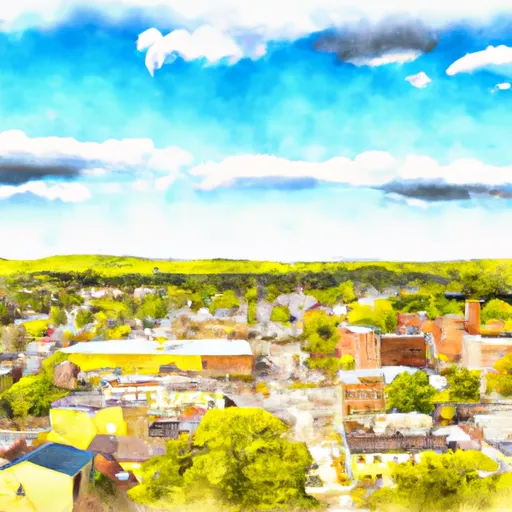-
 Snoflo Premium
Snoflo Premium
Get unlimited access to all our content
With no Ad interruptions! - Start Your Free Trial Login with existing account
Torrington
Eden Index
Climate
8.2
•
Recreation
5.1
•
Community
2.8
•
Safeguard
5.8/10

Torrington, Connecticut is a charming city located in Litchfield County, in the northwestern part of the state. The climate in Torrington is characterized by warm summers and cold winters. Average high temperatures in July reach around 82°F (28°C), while average lows in January drop to around 15°F (-9°C). Precipitation is evenly distributed throughout the year, with an average of about 3-4 inches per month.
Torrington is surrounded by picturesque landscapes, including the scenic Naugatuck River that flows through the city. The river offers hydrology enthusiasts opportunities for fishing, boating, and other water-related activities. In addition, the area is home to several parks and natural areas where outdoor enthusiasts can enjoy recreational activities like hiking, biking, and camping. Burr Pond State Park, Mohawk State Forest, and Sunnybrook State Park are some notable destinations for outdoor recreation in the vicinity.
Overall, Torrington, Connecticut provides a moderate climate with distinct seasons, a beautiful river, and various outdoor recreation opportunities for nature lovers and adventurers alike.
What is the Eden Index?
The Snoflo Eden Index serves as a comprehensive rating system for regions, evaluating their desirability through a holistic assessment of climate health, outdoor recreation opportunities, and natural disaster risk, acknowledging the profound impact of these factors on livability and well-being.
Climate Health Indicator (CHI): 8.2
Torrington receives approximately
1359mm of rain per year,
with humidity levels near 79%
and air temperatures averaging around
9°C.
Torrington has a plant hardyness factor of
6, meaning
plants and agriculture in this region thrive during a short period during spring and early summer. Most
plants will die off during the colder winter months.
By considering the ideal temperature range, reliable water supplies, clean air, and stable seasonal rain or snowpacks, the Climate Health Indicator (CHI) underscores the significance of a healthy climate as the foundation for quality living.
A healthy climate is paramount for ensuring a high quality of life and livability in a region, fostering both physical well-being and environmental harmony. This can be characterized by ideal temperatures, reliable access to water supplies, clean air, and consistent seasonal rain or snowpacks.
Weather Forecast
Streamflow Conditions
Connecticut Coastal
Area Rivers
Connecticut Coastal
Snowpack Depths
Connecticut Coastal
Reservoir Storage Capacity
Connecticut Coastal
Groundwater Levels
Recreational Opportunity Index (ROI): 5.1
The Recreational Opportunity Index (ROI) recognizes the value of outdoor recreational options, such as parks, hiking trails, camping sites, and fishing spots, while acknowledging that climate plays a pivotal role in ensuring the comfort and consistency of these experiences.
Access to outdoor recreational opportunities, encompassing activities such as parks, hiking, camping, and fishing, is crucial for overall well-being, and the climate plays a pivotal role in enabling and enhancing these experiences, ensuring that individuals can engage in nature-based activities comfortably and consistently.
Camping Areas
| Campground | Campsites | Reservations | Toilets | Showers | Elevation |
|---|---|---|---|---|---|
| Granville State Forest | 22 | 1,135 ft | |||
| Kettletown State Park | 65 | 137 ft | |||
| October Mountain State Forest | 47 | 1,021 ft | |||
| Point Folly - White Memorial | 45 | 914 ft | |||
| Tolland State Forest | 93 | 1,473 ft | |||
| Chester - Blanford State Forest | 12 | 516 ft | |||
| Black Rock State Park | 100 | 399 ft | |||
| Beartown State Forest | 12 | 1,614 ft | |||
| Haws Memorial - American Legion State Forest | 30 | 534 ft | |||
| Windmill Hill - White Memorial | 45 | 947 ft |
Nearby Ski Areas
Catastrophe Safeguard Index (CSI):
The Catastrophe Safeguard Index (CSI) recognizes that natural disaster risk, encompassing floods, fires, hurricanes, and tornadoes, can drastically affect safety and the overall appeal of an area.
The level of natural disaster risk in a region significantly affects safety and the overall livability, with climate change amplifying these risks by potentially increasing the frequency and intensity of events like floods, fires, hurricanes, and tornadoes, thereby posing substantial challenges to community resilience and well-being.
Community Resilience Indicator (CRI): 2.8
The Community Resilience Indicator (CRI) recognizes that education, healthcare, and socioeconomics are crucial to the well-being of a region. The CRI acknowledges the profound impact of these elements on residents' overall quality of life. By evaluating educational resources, healthcare accessibility, and economic inclusivity, the index captures the essential aspects that contribute to a thriving community, fostering resident satisfaction, equity, and social cohesion.

